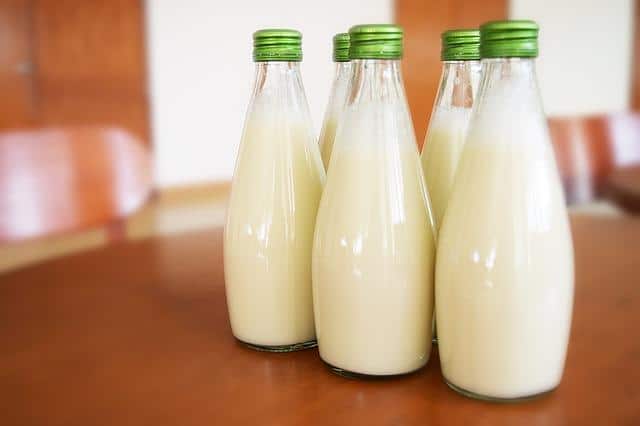Skim. Low fat. Two percent. One percent. What type of milk do you choose for your family? If you are like most Americans, you steer clear of whole milk, believing that it contains too much fat and calories.
Since the early 1970s, whole milk has been criticized by scientists and nutritionists for its high content in saturated fats, which have been believed to lead to weight gain, and because of its high LDL level (or bad cholesterol level), which has been thought to contribute to heart disease.
According to the USDA, sales of whole fat milk sales decreased by more than 60 percent between 1975 and 2014. During the same period, on the other hand, sales of 2 percent milk increased by almost 106 percent, and sales of 1 percent and skim milk soared by about 170 percent and 156 percent, respectively.
Some critics have called a glass of whole milk no better than a glass of liquid fat. Others have said that whole milk consumption can be a contributing factor to the onset of diabetes.
Diatomaceous Earth: The Best All-Natural Wormer For Your Livestock
However, recent studies are showing that we have been sold a bill of goods where whole milk is concerned, and that drinking whole milk actually may be better for you than drinking low fat or non-fat milk. Here’s one reason: The fat content in milk helps bind its other ingredients, such as calcium and vitamins, so that the body can absorb them more efficiently, studies show.
A recent article published in the European Journal of Nutrition reported that people who consume full-fat dairy products, including whole milk, are not more likely to develop heart disease and type 2 diabetes than people who consume low-fat dairy products.
Dr. Mario Kratz, first author of the study review and a nutrition scientist at Seattle’s Fred Hutchinson Cancer Research Center, reviewed 25 studies for the published research. In a press release accompanying the review, he reported that none of the research suggested that low-fat dairy is healthier or is better for humans in terms of obesity.
A study published in the Scandinavian Journal of Primary Health Care in 2013 reviewed the dairy consumption and obesity rates of about 1,500 middle-aged and senior adults. It found that those people who frequently consumed full-fat dairy products had lower obesity rates than those who consumed low-fat dairy products.
How is it that a food with more calories can be better for maintaining a healthy weight? The answer lies in the fact that not all calories are the same. Kratz and his team theorized that the fatty acids in whole dairy products help you stay fuller longer and thus eat less in the long run. Dairy fat may also help the body regulate hormones and help your body burn energy.
Everything You Need To Know To Keep A Cow Healthy, Happy, And Productive…
United States commercial dairies process milk of all fat contents similarly. The cream is separated from the whey. With the exception of skim milk, the cream is then added back in. Low-fat milk contains 1 percent or 2 percent fat, and whole milk contains 3.25 percent fat. (Of course, if you drink raw milk, you don’t have to worry about that.)
Not surprisingly, the taste of low fat and skim milk is less rich and creamy than low fat varieties Frequently, dairies add flavors to low-fat and skim milk to make up for the loss of taste when the fat is removed. In those cases, the sugar content can increase by as much as 14g per eight ounce serving.
Whole milk contains fewer carbohydrates than low fat or skim milk because more of its volume contains fat. Whole milk also contains slightly less protein than low fat or nonfat options.
Recent research also shows that the saturated fats in whole milk may protect against certain diseases and are not associated with heart disease as previously thought.
If are concerned about the use of growth hormones or antibiotics in commercial dairies, check out organic milk options at your grocery store. You also could consider purchasing your cow’s milk straight from a dairy farmer whose cows are raised without the use of hormones or antibiotics.
Scientific recommendations vary on how much milk we should drink on a daily basis. The Harvard School of Public Health, for instance, recommends consuming one or two servings a day of milk and dairy products. On the other hand, the International Food Information Council’s latest dietary guidelines suggest three servings of milk, or of an equivalent dairy product per day.
How much milk you should drink each day may be unclear, but it does appear that drinking whole milk is something you can put back into your diet in moderation without any misgivings.
Do you believe whole milk is healthy? Share your thoughts in the section below:
